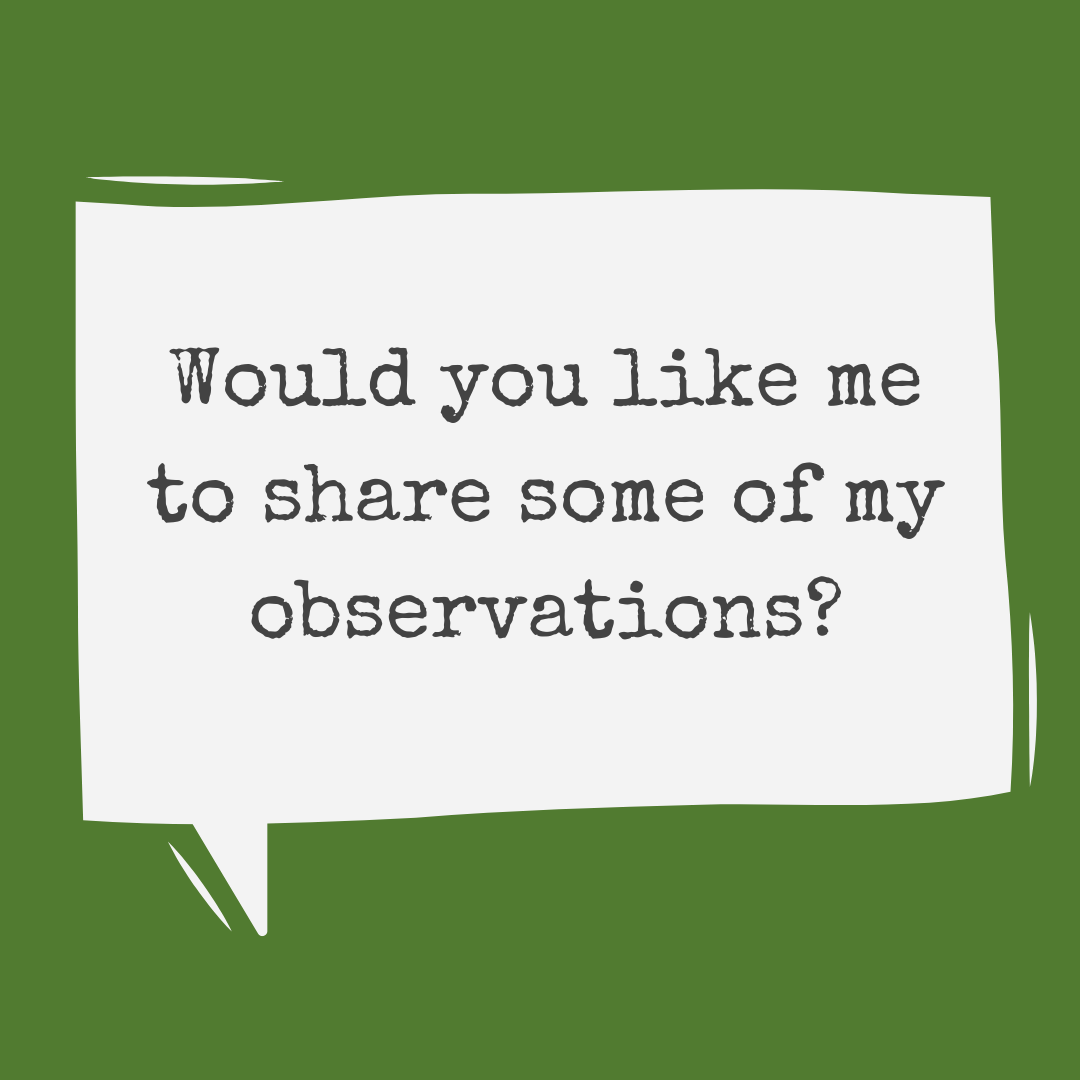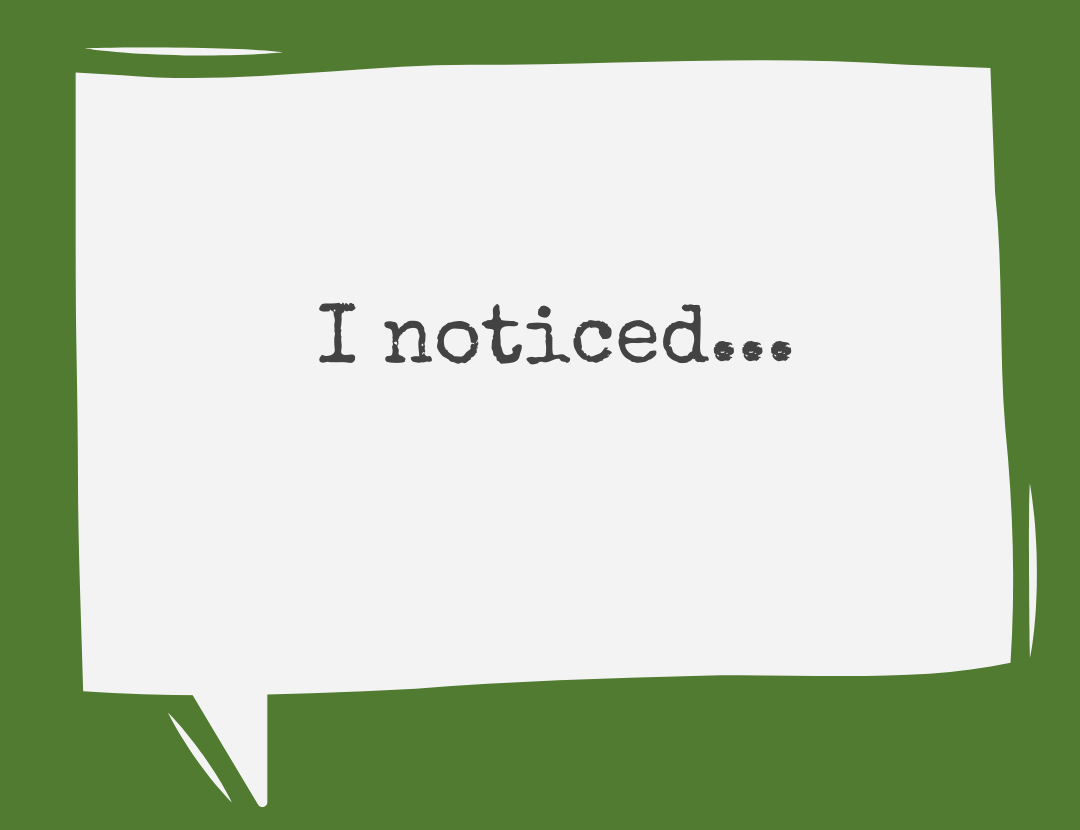6 The Post-Observation Meeting
Lynn Meade

Timely feedback is essential for meaningful reflection on teaching practices. Offering feedback soon after the observation ensures that details are fresh and interpretations remain clear. The post-observation meeting should always be conducted in person whenever possible, as the nuances of a shared dialogue—such as tone, body language, and presence—are often lost in phone calls or written communication. While a written summary or email can be helpful as a follow-up, it cannot substitute for a genuine conversation.
Crucially, the post-observation meeting is not an evaluation but a formative exchange rooted in mutual respect and professional growth. The observer’s role is to share what was seen—not to judge or assess—and to create space for the faculty member to reflect, ask questions, and consider refinements to their approach. This moment should be anchored in respectful listening and confidentiality, allowing the faculty member to feel supported, safe, and empowered to engage in honest self-reflection

Ask For Their Self-Assessment
Begin the post-observation conversation by inviting the faculty member to reflect on their own teaching. Gentle prompts like “How do you think it went?” or “What’s your overall impression of the class?” place the faculty member’s perspective at the center of the discussion and encourage meaningful self-reflection.
Resist the instinct to offer your thoughts too quickly. Instead, create an environment of attentive listening—leave space for silence, maintain open body language (such as uncrossed arms and a forward-leaning posture), and affirm responses with simple acknowledgments like nods or brief verbal cues (“mm-hmm,” “I see”).
After this initial reflection, you can guide the conversation with follow-up questions that encourage deeper insight:
- “After the class, what did you feel was the most successful part?”
- “If you taught that topic again, what might you do differently?”
- “At what point in the class did you feel the learners were most engaged?”
- “What did you think of the students’ participation?”
These open-ended questions promote agency and self-awareness, allowing the faculty member to articulate successes and consider areas for adjustment without defensiveness.

Ask If They Would Like You to Share Observations
When the moment feels natural and trust has been established, gently shift with the question, “Would you like me to share some of my observations?”
This simple invitation helps them feel like they are in control of the situation and reinforces the meeting as a conversation, not a correction.

Give Descriptive Feedback
Effective peer observation feedback is descriptive, specific, and respectful. It centers on observable moments—not evaluations or judgments—and encourages faculty members to reflect and refine their teaching. Here’s how to structure that feedback meaningfully:
Begin with a Positive Observation
Start with an affirming comment based on what you observed. Pick an example that is genuine and specific and illustrates a strength. This sets a supportive tone and builds confidence. “I noticed the class began promptly at 9:00, and students were already engaged and ready to work. That kind of consistency helps establish trust and momentum.”
Describe Without Judging
Use neutral, observational language to recount moments from the class. Avoid labeling behaviors as “good” or “bad.” When you transitioned between activities using clear verbal cues, I saw students quickly shift focus each time. That suggested they understood your expectations.” Keep your descriptions of what the instructor did and how students reacted. Describe concrete actions. Link your observations to a moment in the class and, when appropriate, tie them to student responses.
Describe what you saw or heard:
- Don’t say, “You were very clear.” Do say, “When you asked students a question, I observed ….
- Don’t say. “You really know your students.” Do say, “I noticed how you greeted your students by their first names and even asked specifics about their weekend.”
Here are some examples of what that might look like.
Statistics Class: “The class began with a warm-up problem on regression. I noticed students referencing their notes and using calculators actively throughout the activity. During the explanation of residual plots, several students asked clarifying questions, suggesting engagement with the concept.”
History Class: “You incorporated primary source excerpts into your lecture on Reconstruction. I noticed that when you read from the Freedmen’s Bureau document, students leaned in, and one group began quietly discussing the implications. That moment seemed to stimulate spontaneous peer dialogue.”
Fine Arts Class: “During the critique session, students offered feedback on one another’s charcoal studies. I observed you encouraging them to speak to technique and composition rather than preference, which helped shift the tone toward constructive commentary. Many students used vocabulary from earlier in the unit.”
Journalism Class: “You reviewed ethical standards in reporting using a recent news example. I noticed students taking notes during your breakdown of bias indicators, and several nodded when you explained the sourcing triangle. Your use of live media gave real-time relevance to the discussion.”
Sociology Class: “While discussing social stratification, you asked students to define class mobility. I observed several students referring back to the case study from last week, connecting personal narratives to the theoretical framework. Your use of small-group breakout sessions led to discussions in each corner of the room.”

Feedback Tips
As a peer observer, your role is to reflect what you saw, not to evaluate or prescribe. When sharing observations that may be perceived as negative, the goal is to foster insight, not defensiveness. This section offers strategies for navigating these moments with care, clarity, and collegiality.
Give Feedback on Requested Focus Areas
Align feedback with what the faculty member asked you to observe. This shows respect and ensures relevance. Reference the goals or teaching questions they shared in advance. “You mentioned wanting feedback on student engagement during discussions. I noticed that when you posed open-ended questions, more students volunteered answers compared to when the prompts were factual.”
Address Areas for Improvement as Questions or Observations
If suggestions are needed, share no more than one or two, and frame them descriptively—not as flaws. Start with “I noticed” or “It seems like” to reduce feelings of judgment. I noticed a few students were off-task during the group activity. Did that match what you experienced, or was something else going on in that moment?”
Share Items They Might Not Have Noticed
Use your vantage point to reflect meaningful patterns or moments you witnessed that the instructor may not have been aware of. “From my position in the back, I could see how all student groups were collaborating. In particular, I noticed Group 2 referring directly to your lecture notes as they built their response.” Highlight areas of strength, such as group dynamics or pacing, or note things they might have missed, like the number of students who were off-task on their computers.
Frame Criticism as Questions
Report an observation that might be considered negative, like several students in the back row were talking amongst themselves and seemed to be disengaged. Ask the faculty member how they might bring in those students. For example, you might say, “I noticed that the end of your lecture was more rushed than the beginning. Did you run out of time? What might help with that in the future?”
Here are some samples of what that might look like
Communication Class with low student participation
Observation: “From my seat near the back, I noticed that several students didn’t speak during the group discussion and seemed disengaged.”
Question: “How do you usually encourage quieter students to participate? Were you surprised by the level of engagement today?”
Physics Teacher with slides too small to read from the back of the classroom
Observation: “I noticed that several students in the back were squinting and appeared to struggle to see the slides as a result, they seemed to become disengaged during the slide presentation.”
Question: “Have you had a chance to see how the slides look from the back of the room? What might help ensure everyone can follow along visually?”
Math teacher who didn’t leave time for students to answer questions
Observation: “You asked several great questions. You waited about two seconds and then answered the question yourself.”
Question: “Have you noticed how students react when you pose a question? Why might they be slow to respond? What strategies might help give them more time to think and respond?”
French teacher with classroom management challenges
Observation: “There were several moments when students were talking over one another or not responding to your prompts.”
Question: “How do you feel the classroom dynamic is working right now? Are there strategies you’ve considered to help establish more structure or responsiveness?”
History teacher reading from dense slides
Observation: “During the lecture, I noticed several students were disengaged—some appeared to be shopping online or had their heads down.”
Question: What’s your sense of student engagement?
Avoid Giving Advice Unless Asked Specifically
Remember, your role is as an observer, not an evaluator.
- Avoid comparing them with other faculty.
- Do not compare their situation to something that you would do, “If it were me, I would.”
- Make it a conversation and not a lecture. Avoid dominating the conversation without asking for their thoughts.
- Avoid telling them what they should do: “You should learn to use better examples,” or “You should give a pre-lab talk; I read that they really work.”
“I tell them up front I am not here to hurt and criticize. The info that we are gathering belongs solely to them.
I choose to be uber positive and really emphasize those things. Then I pick just a few things to improve…because isn’t that the secret to developing good teaching anyway? Meaning, we can only tackle so many new things at once! Adding a few new ideas/teaching tips a semester will drastically improve teaching over time.
After we are done everyone says – I was so afraid, but you were true to your word, and it was a positive experience. That means a lot!”
Carole Shook, Trained Peer Observer
Confidentiality
When a faculty member opens their classroom to a colleague, they are extending a profound gesture of trust and confidence. That trust must be honored with discretion, respect, and a clear understanding of boundaries. Confidentiality means many things:
- No Sharing Without Consent: Observers must never share details of the teaching session—whether strengths, challenges, or anecdotes—without the faculty member’s explicit permission. It’s acceptable to say, “I observed Dr. Smith’s class,” but not to elaborate on what occurred.
- Avoid Informal Disclosure: Even casual comments in hallway conversations or department meetings can breach confidentiality.
- Secure Written Records: If written notes or summaries are created, they should be stored securely and shared only with the faculty member. These documents are not for administrative review unless the faculty member chooses to include them.
Confidentiality is not just a policy—it’s a practice of care. It signals that peer observation is about growth, not judgment, and that the classroom remains a protected space for experimentation, learning, and professional evolution.
Summary
The post-observation meeting is a formative, collegial exchange rooted in trust, reflection, and professional growth. The conversation begins with the faculty member’s self-assessment, encouraging introspection through open-ended questions and active listening. Observers are guided to offer descriptive, nonjudgmental feedback that highlights specific classroom moments, student engagement, and instructional choices. The goal is not to evaluate but to support, helping instructors refine their practice through thoughtful dialogue.
References and Resources
The Center for Teaching and Learning. Oregon State University. Giving and Receiving Feedback in Peer Observation of Teaching: Do’s, Don’ts, and Criteria.
The Center for Teaching Support and Innovation, University of Toronto. (2017). Peer Observation of Teaching Guide. https://teaching.utoronto.ca/wp-content/uploads/Peer-Observation-of-Teaching-Guide.pdf
Chism, N. (2007). Peer review of teaching: A sourcebook. Bolton, MA: Anker
DeLima Thomas J, Arnold RM. Giving feedback. Journal of Palliative Medicine. 2011;14:233-239.
Kurtz S, Silverman J, Draper J. Analyzing interviews and giving feedback in experiential teaching sessions. In: Teaching and Learning Communication Skills in Medicine, 2nd ed. United Kingdom: Radcliff Publishing, 2005.
Newman, L.R. (2012). Peer Observation of Teaching Handbook. Shapiro Institute for Education and Research at Harvard Medical School and Beth Israel Deaconess Medical Center. https://drive.google.com/file/d/1DqxsTVjm2Gb414NAcCy4wWkoKuStgJ3Z/view
*The author wrote the original draft of this work and used Microsoft Copilot and Claude AI to assist with revision and proofreading.
Microsoft. (2025). Copilot [Large language model], http://copilot.microsoft.com
Anthropic. (2025). Claude (v3) [Large language model] http://claude.ai.
Media Attributions
- charlesdeluvio-rRWiVQzLm7k-unsplash © Charles Deluvio
- How do you think it went
- I noticed (2) © Lynn Meade
- What would happen if

